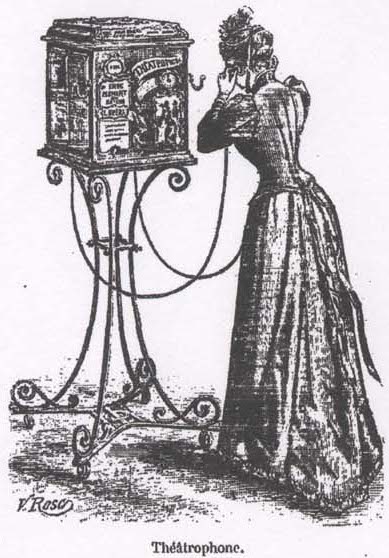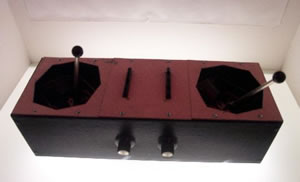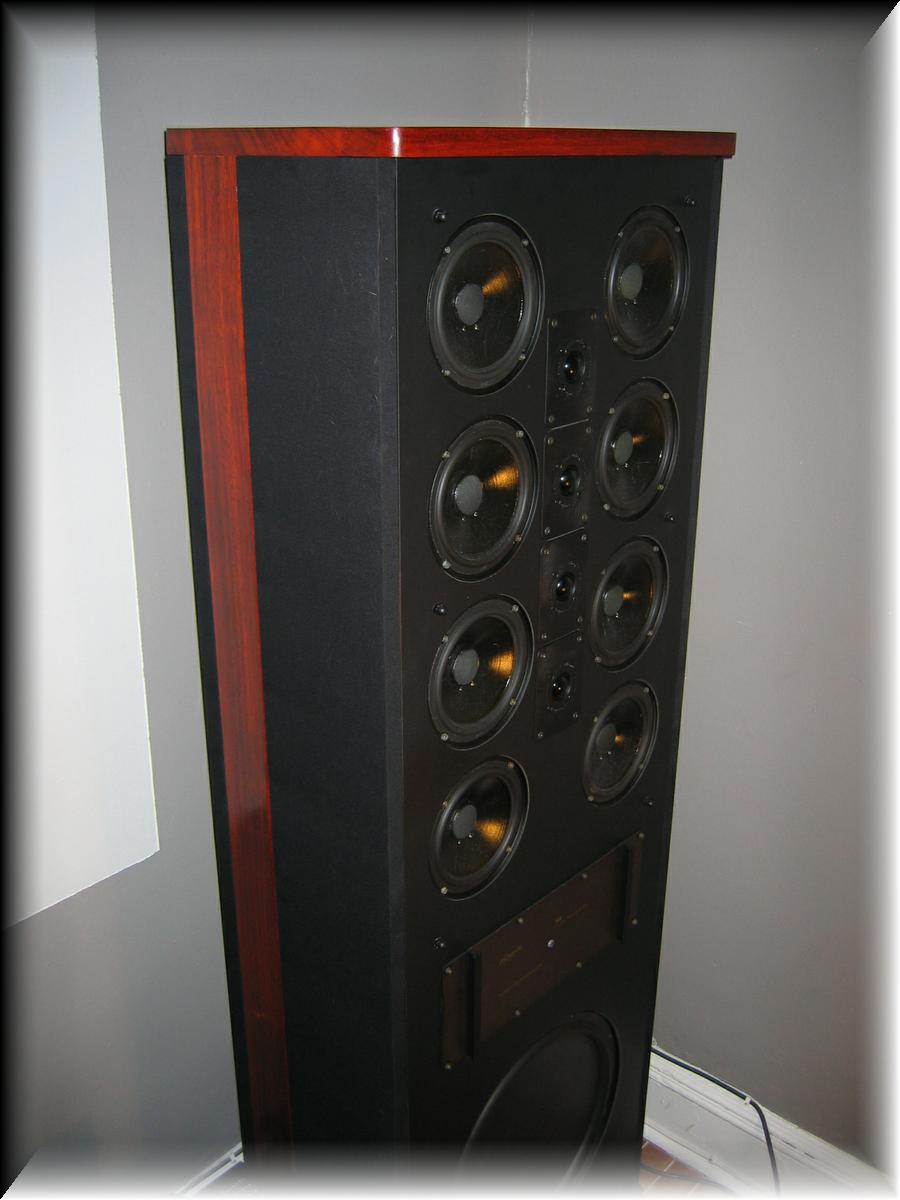3D sound - from 19th century technology to 21st technology

Three-dimensional sound in all its manifestations - multichannel systems and headphones, recordings that create the illusion of three-dimensional sound for stereo headphones (for example, such ), sound bars - have become firmly established in modern everyday life.
All this is built on the same principles, all this has long been an attribute of the future, which has already arrived.
')
The more curious that the history of similar devices has more than one century. Interesting?
Then back in the past - let's look at the devices that have become the key milestones in the development of 3d audio. Moreover, some of them are painfully reminiscent of the “novelties” that we admire today as a new stage in the development of audio technology.
A bit of boring theory or “I didn't understand a damn thing.”
In short and simplistic terms, any surround sound system is built on knowledge of how the human ear perceives sound and determines its location of its source.
Let me remind you - it is all about the difference in the time when the ears perceive sound and the difference in sound level in different ears. Distortion, allowing to establish the location of the source, made to the sound of the auricle, head and torso. The combination of these and other similar factors allows you to determine the direction from which the sound comes.
We hear with two ears - that is “binaural”. Accordingly, knowledge of this process allows one to appropriately record or distort the already recorded sound for the listener to perceive it as three-dimensional. Such methods, which are called, strangely enough binaural, are used to create special recordings for listening to stereo headphones (discussed so many times on Habré that it’s indecent to stir the topic), as well as in most modern video games - with very varying success, it should be noted.
However, knowledge about the perception of binaural sound by man is in demand not only for stereo headphones. They are also used by most modern multichannel speakers so that the sound does not “jump” from one speaker to another, but is heard, say, between the two rear ones, when necessary.
On it we will finish with the theory.
Let's move on to practice ....

And we begin with a stetofona. This instrument, which was an upgraded stethoscope, was introduced to the Royal Society in 1858 by Somerville Scott Alison.
Remember: "the difference in time to reach the sound of the ears"? The stereophon, isolating each ear and allowing the exact order, the sequence of sound to be reached by each of the ears, provided an experimental basis for studying the human perception of sound.
It was Alison who first introduced the concept of "binaural".
By the way, subsequently, similar devices played a significant role in the study of sound processing by the human brain.
An example of such experiments are the experiments of Jung - Paul Jung, a sound researcher, and not of Carl Gustav, a psychologist, please note.
So, Paul Jung was very fond of this topic. So much so that some time passed in a similar decoration with hoses wrapped so that the receivers of sound were directly at the opposite auricles.
In addition to perverted pleasure, Jung was able to thus obtain truly invaluable knowledge of how we perceive sound. For example, after some time, Jung's brain adapted in those cases when he saw the speaker or another obvious source of sound, without any conscious effort to give the “right” direction to the object. At the same time, objects that Jung did not see still sounded "the opposite."
Thus, the great importance of psychological perception, faith, if you will, in perceiving the direction of sound was revealed.
However, we proceed to the next exhibit - a kind of top of the acoustic instruments of knowledge of the 19th century.
Thompson's pseudo-phone is the forerunner of those same headphones for a few hundred bucks, which almost every gamer is now licking at.

The unsubstantial production of gloomy genius in its simplicity, sorry for the tautology, ingenious. By adjusting the angles of the flaps in the horizontal and vertical planes, it was possible to achieve the illusion of sound, directed from a point where, in principle, there were no sound sources. By adjusting not only the sound level, but also the distortion, the pseudophone was a big leap forward compared to the stereo.
An article about the tool was published by the inventor, Sylvanus Thompson, in 1879 at Philosophic Magazine.
Psevdofon essentially hardcore accomplished what is now done programmatically, using HRTF-algorithms. If you dream up in the style of steampunk - attach a mechanical drive to the flaps - and enjoy three-dimensional operas with full-fledged 3d-headphones.
Although why fantasize? I present to you ...
The Theatrophone (Théâtrophone) is an ingenious system that transmitted a binaurally recorded (although not yet three-dimensional, but tending to this, it can be said, with an extended virtual scene!) Full-length virtual stage!) With theatrical performances. In the development of the use of the very, just started to receive data on how to record sound for two ears.

The system was introduced in 1881 by Clement Ader. The first commercial application of binaural technology, which created advanced stereo in the mono era. And you say - virtual barber shop on youtube to listen, cutting, pancake, edge technology, three-dimensional sound from headphones ...
Look in the mirror. Approximately the same facial expression was at potential buyers. It is not surprising that the company went bankrupt. But a start was made.
The next “loud” stage in acoustics came in 1967, when Pink Floyd gave a quad live concert in London, using a bespoke quad-audio system.

This is how the control panel looked like with the very same 1967 sample system.
This concert marked the beginning of a short epoch of quadrophonic sound. Unfortunately, due to the imperfections of technology and the titanic size of the four columns placed throughout the room and causing horror in home and close audiophiles, fashion has sunk into oblivion.
The next stage was the stage of an even more short-lived triumph of ambiophony - one of the attempts to fasten the principles of binaural sound perception to stereo and multi-column systems.

The task in the development of ambiophony was to level the so-called ICA - internal auditory cross-distortion caused by the fact that when using the speakers, the left ear hears what is intended only for the right and vice versa. When using headphones, such problems did not arise, as the headphones allow you to clearly separate the sound for each ear. Most in this regard, the company distinguished Carver Corporation and Polk Audio.
Polk's approach was interesting: the company used experts who had great doubts and at that time almost “anti-scientific” theory, having mounted an additional row of speakers in the speakers to play an inverted sound that was supposed to drown out “extra” sounds - but the results were obtained Nor surprising, positive. The theory is confirmed.
However, the century of ambiophony was not too long. In 1987, she debuted the first digital 5.1 system created by a Frenchman named Dominique Bertrand, installed in the famous Parisian Moulin Rouge.

Before the first use of the AC-3 codec in the cinema it was 5 years.
The latest stage in the development of such systems is 2004.
This year, Polk Audio launched the first-ever soundbar (the so-called soundbar), providing sound from the back and sides of a single speaker in the front.

The line was called Polk Audio SurroundBAR and its development continues to this day.
Polk was followed by Yamaha, Philips and other large and small companies - not to list them all.
What will be the next stage of development of three-dimensional sound?
Who knows? I'm not sure.
I know one thing - they all, in fact, the development and digitization of a small piece of iron, which Thompson collected in the 1879th.
"We saw far away because we were standing on the shoulders of the titans . " So said Isaac Newton. Better - you will not tell.
PS It turned out confused. I simply could not touch much - for example, analog
multicolumn systems.
But I hope you found the article interesting.
Source: https://habr.com/ru/post/114492/
All Articles